By Frank Owen, PhD, PE, Professor Emeritus, Mechanical Engineering, California Polytechnic State University, San Luis Obispo, California –
Introduction
Every year since 2000 a somewhat motley and diverse group of speed junkies make the long trek to remote Battle Mountain, Nevada, to have a go at going faster under just the power of their legs. They ride in bullets built for speed, high-tech marvels of engineering and technology. So far they’ve succeeded in getting to almost 90 mph! And the female record stands at more than 76 mph!
[Editor’s note: this article was written before the 2018 event. Any reference to dates and/or records should be considered with that in mind.]
2019 Event Info:
September 8-14 — World Human Powered Speed Challenge (WHPSC)|, Battle Mountain, NV, 20th annual hosted by the IHPVA. Current record is 89.59 mph. Classes: Men’s, Women’s, Juniors in Open, Multi-track, tandem and Arm Power. International cyclists from around the world will gather on SR305, the fastest stretch of road in the world to see who can break the World Record., Al or Alice Krause, 707-443-8261, 707-845-3683, [email protected], ihpva.org, whpsc.org
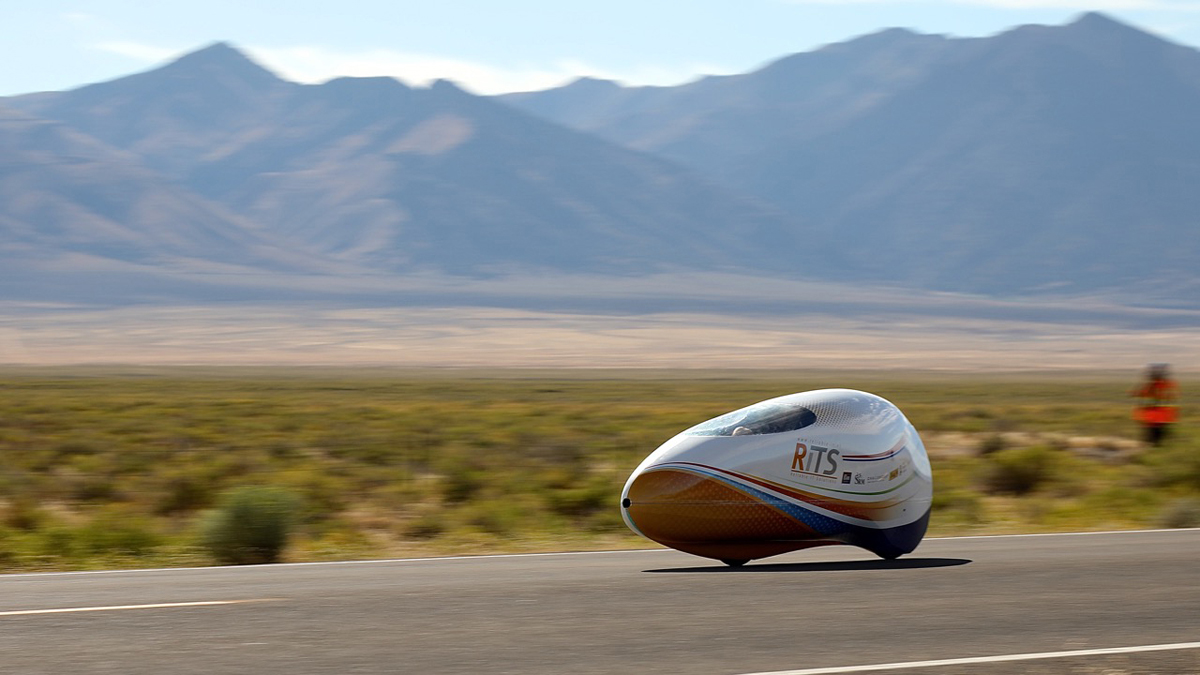
There is no great money in this. It’s no Indy 500 nor a Formula 1 race. Yet teams put up the cash and effort to come to this remote spot to take advantage of a unique stretch of lonely highway, Nevada State Highway 305 that leads south of Battle Mountain out into the high desert. The high desert air is thin, reducing aerodynamic drag. Nevada State 305 is straight as an arrow and relatively flat, a requirement for the world record.
Last year’s event took place 11-16 September, 2017. It drew teams from Canada, Mexico, Italy, England, the Netherlands, Australia, Japan, etc. Even just the appearance of this polyglot lot of bike racing aficionados in this home-grown bedrock of ranching and mining is a cultural clash interesting to observe and experience.
The technology
The bikes are faired; that is, they have an aerodynamic shell on them that gives them their bullet-like appearance and reduces aerodynamic drag. This is how they are able to achieve speeds in excess of 80 mph. Besides being slippery aerodynamically, they are also light, sculpted from modern-day carbon fiber, the high-tech, strong-as-steel stuff that is also used to make race cars, airplanes, helicopters, etc. Such bikes are called “streamliners” in the specialized jargon of HPVs (Human-Powered Vehicles).
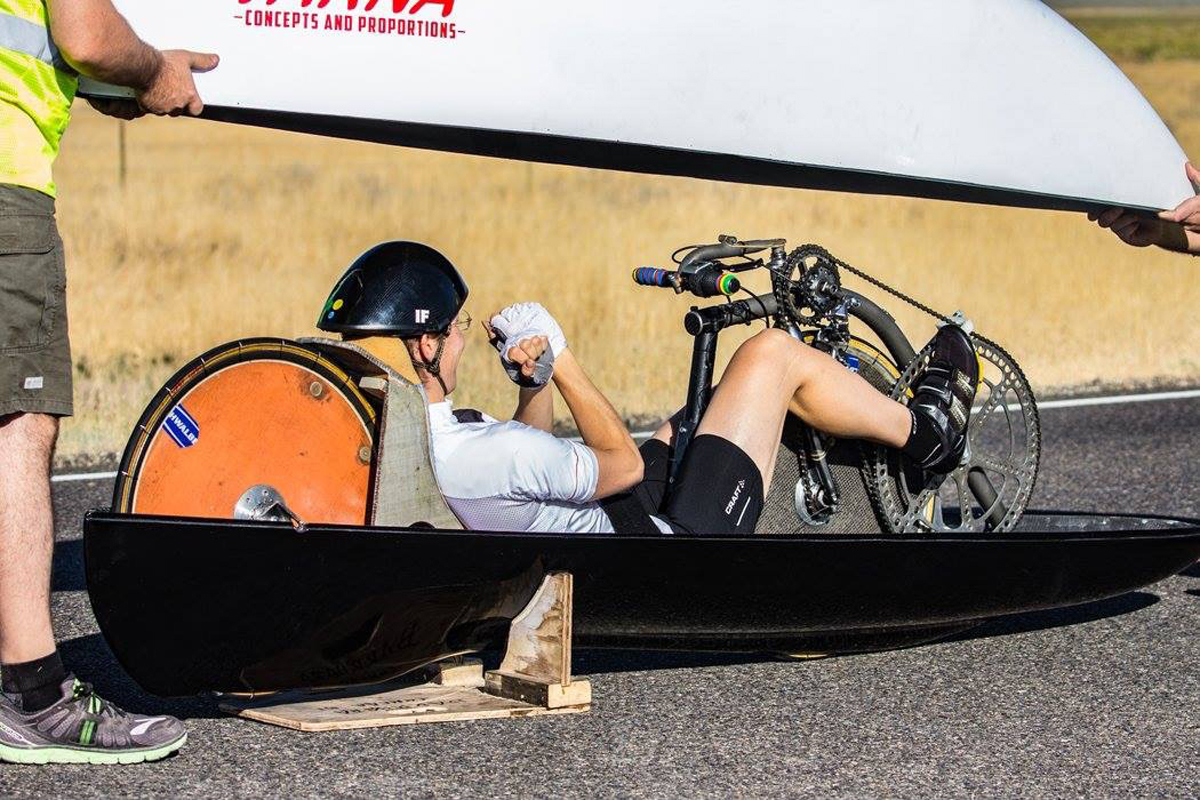
Fitting a human engine into this shell, along with the drive-train needed to make it reach these speeds, is no easy matter. The smaller the cross-section of the vehicle, the less drag it will experience. This dictates that the rider must be reclined, that is, lying on his/her back. This makes seeing ahead no trivial matter. And even keeping the bike upright, especially at the low speeds, is tricky.
The reclined rider must drive one wheel, usually the front one, with an often complex, high-tech transmission, crafted to fit very tightly into the small package with his/her body. One rider’s bike last year had no wheel-well for the front wheel, which she was straddling. She had to wear Kevlar pads on her bike shorts should the fast-spinning wheel come into contact with her legs! Anything to save weight and space.
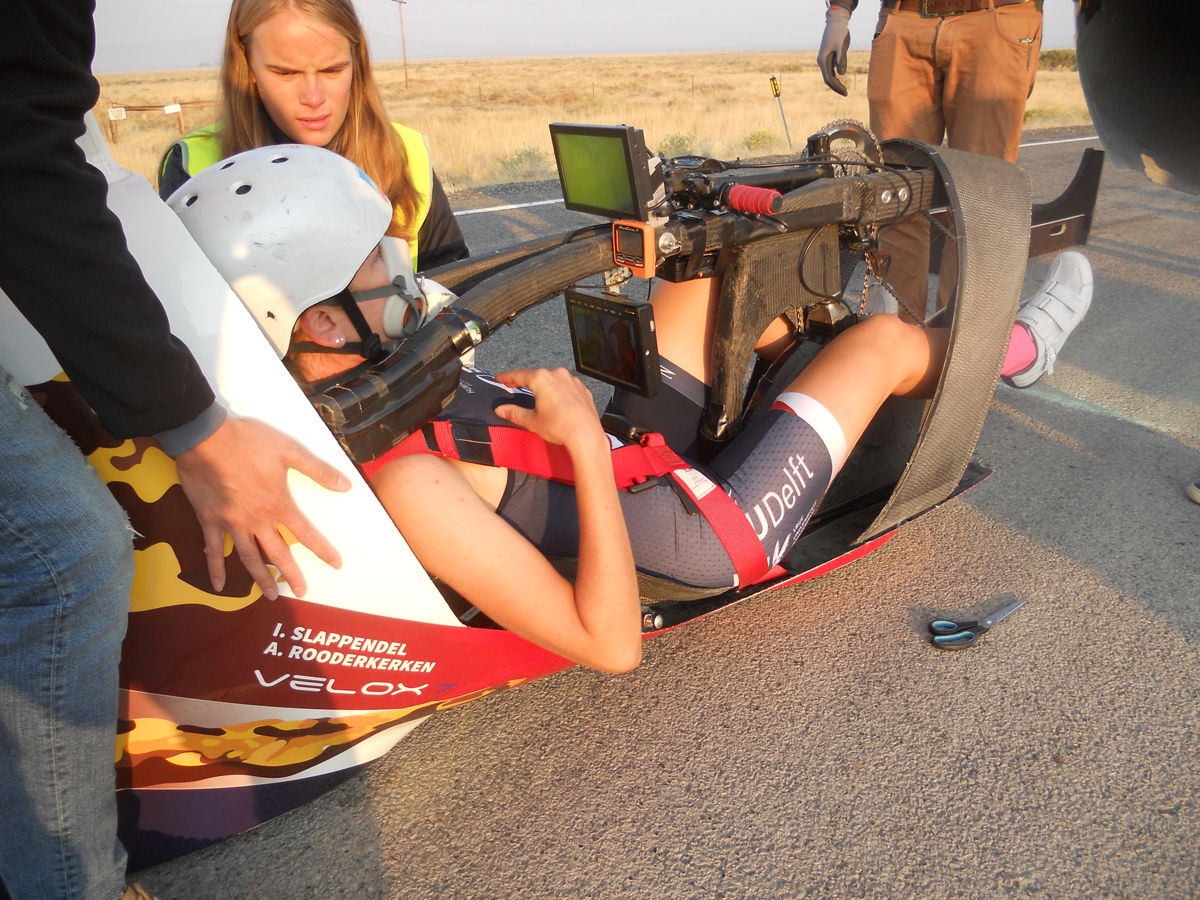
The answer to the limited visibility, for most of the bikes now in this competition, is to have a “camera bike”. These bikes do not have windshields. A camera is mounted discreetly on top of the bike, and the video display is piped down to a screen just in front of the rider’s face. There is a real argument about camera bikes amongst teams, because they present a filtered view of reality to the rider. One year a Slovenian rider came up with a unique solution that allowed him to lie flat, yet see ahead. He lay down this yearwith his head in the nose of his shell, facing backward. His view forward was through a mirror mounted in front of his face at 45°, looking forward. But this meant that he had to learn to ride the bike looking at a reflection and hence steering backward! Such clever and novel solutions are part of the lore of HPV racing and can give a rider that margin that means a record-setting victory.
Yet another difficulty, often overlooked by novice teams, is that cross-winds have a big effect on the tracking ability of these bikes. The fairing presents a sort of wall to a cross-wind, and the cross-wind tends to knock the bike over or push it off the road. Novice teams tend to forget about the cross-winds and only design the bike for forward motion through the air. Often they produce a slab-sided bike that is more easily knocked over by a side-gust of wind.
Thus mastering the low-speed stability of a streamliner, then keeping it on the road even at high speeds in a cross-wind, and with little visibility, requires a rider with some experience. Yes, young people have an advantage physically, perhaps. But high-speed streamliner racing is not for the faint of heart nor for the inexperienced and mentally unprepared. Often the best performances are delivered by more experienced streamliner pilots.
The teams
Since 2000 the speed trials have evolved from privately-financed, free-lance teams—mostly American—to university-sponsored, international teams. For years the male world-record holder for the Battle Mountain trials was Sam Whittingham, a Canadian bicycle racer, riding streamliners designed and built by Georgi Georgiev, a Bulgarian-born sculptor who immigrated long ago to Vancouver Island. Georgiev has designed and built many streamliners with his brand name Varna. The current fastest female, Frenchwoman Barbara Buatois, set her speed record of 76+ mph in a Varna streamliner.
Georgiev is hands-on, has a lot of experience, uses his intuition to design a beautiful, aerodynamically sleek streamliner. He was again at Battle Mountain in 2017. Buatois was also there racing a Varna bike.
But since 2000 the times have changed. Now the majority of the teams are university-sponsored teams. The 2017 event saw competing teams from Delft University (Netherlands), the University of Toronto, LaSalle University (Mexico), the University of Liverpool (England), Macquarie University (Australia), and the Politecnico di Torino (Italy). There are still privately sponsored teams, some of them long-time participants at the speed trials at Battle Mountain. A private team of Japanese enthusiasts from near Kyoto has attended for the past two years. They are sponsored by Toray Carbon Magic Co., Ltd., of Shiga, Japan, which makes carbon-fiber components for race cars, airplanes, and helicopters.
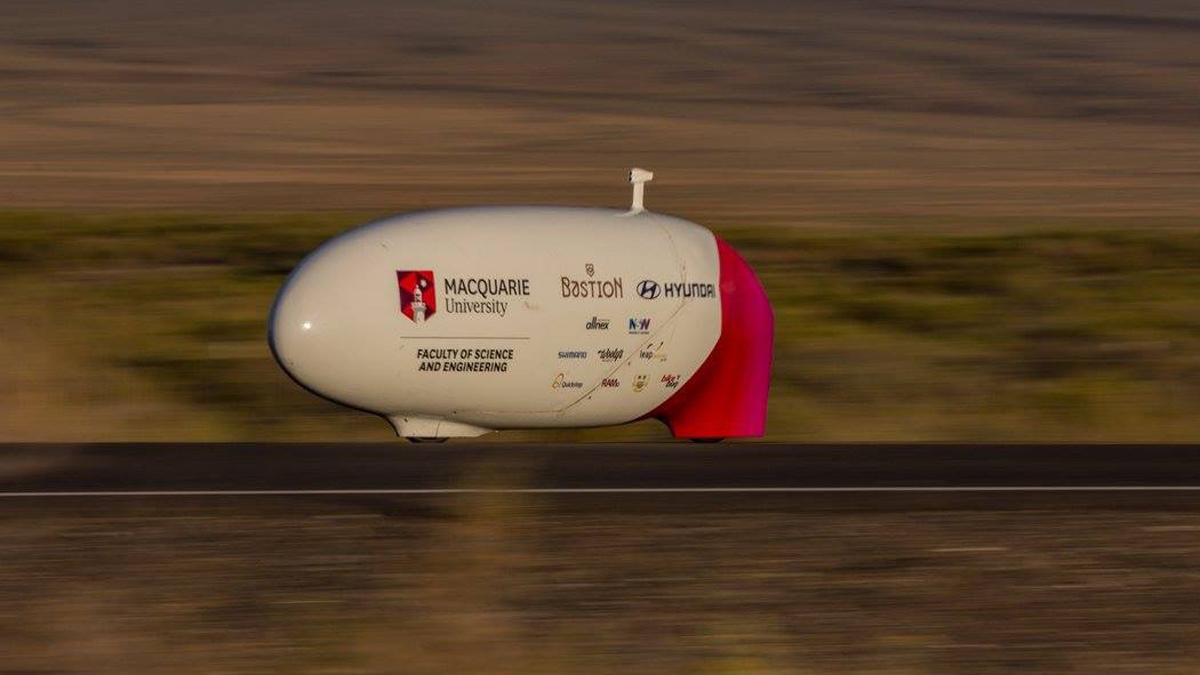
The competition has evolved over the years. It’s gotten more technical, since it is part of the studies of the student participants. The computer plays a much more important role in the design and analysis of the race bikes than it did in the past. Very detailed stress analysis is done on the streamliners’ structures. Computational fluid dynamics is used to optimize the streamlined shape of the racers. A geometric computer model of the transmission is made to test the positioning and possible interference of the components and the rider. Parts and components, often custom-designed, are built nowadays using computer-aided manufacturing and robust 3D printing.
Student participants on teams learn valuable design, analysis, and building skills that will enhance their chances for obtaining interesting employment upon their departure from the university. Indeed, two entrepreneuring students from the University of Toronto, Todd Reichert and Cameron Robertson, founded their own company, Aerovelo, which not only set the speed record of 89.59 mph in 2016 but previously won the American Helicopter Society’s Sikorsky prize for developing and flying a human-powered helicopter in 2013. Aerovelo is currently working in Silicon Valley on the Kitty Hawk Flyer, a project funded by Google co-founder Larry Page to build an electric helicopter for personal transport.
That the trials have become so international is astonishing, especially given that Battle Mountain isn’t the easiest place on earth to reach. But that is, in part, what draws teams from all over the globe to this lonely stretch of highway. For the student squads, it’s a bit like going to Mars, it is so foreign to the surroundings back home.
The time trials: drama and trauma
Months, even years, of work go into designing and building a bike, training for Battle Mountain, packing it all up and arriving at the head of this long, straight arrow of highway. The chips are on the table and the hand is about to be dealt. The actual speed measurement is a speed trap 200 meters long at the end of a 2.5-mile or 5-mile run-up. This is called a 200-meter flying start trial.
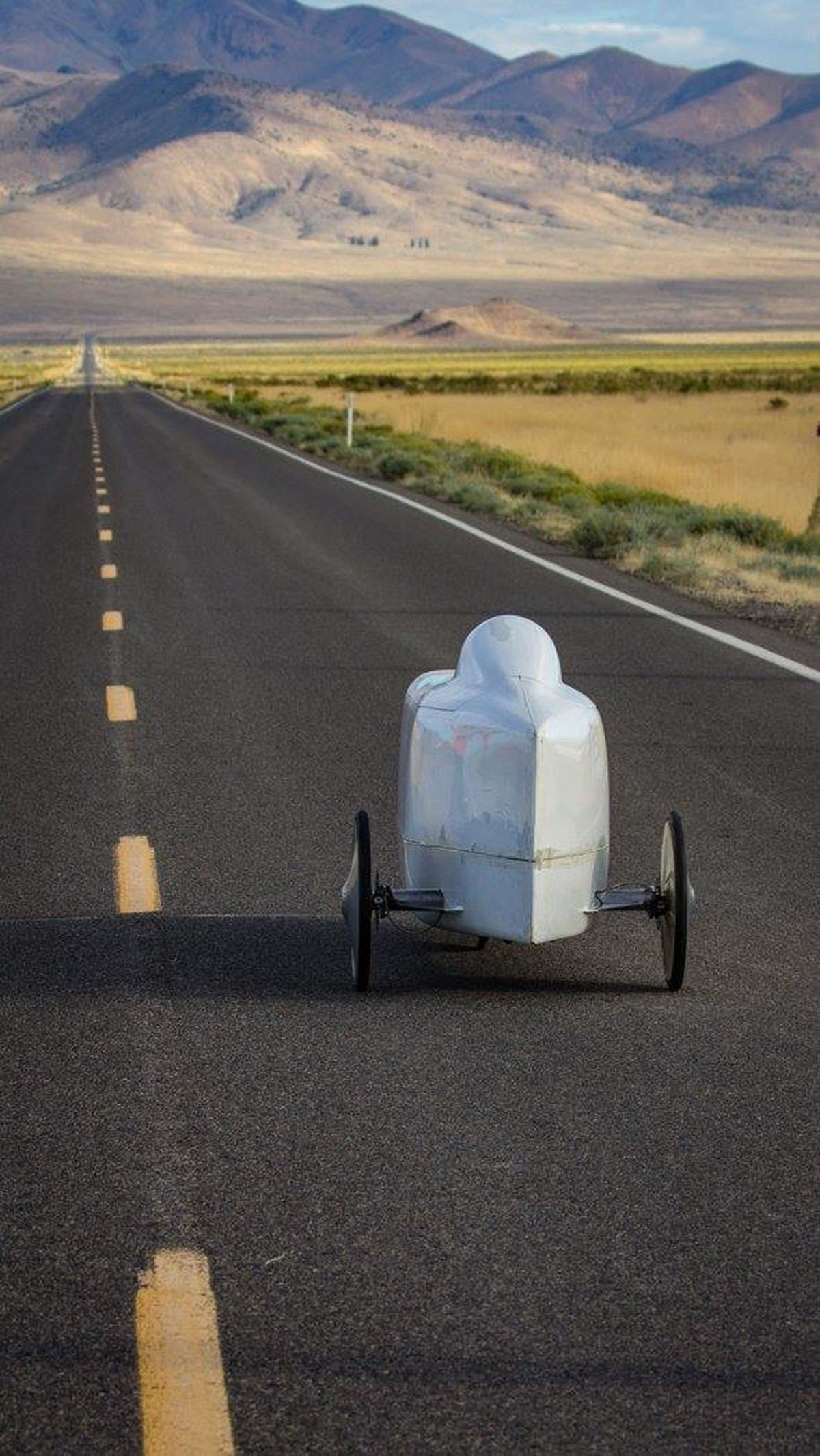
The first step is just to get the bike launched and going down the highway at a good clip. These bikes are built for speed, the regime where they are relatively stable. They are not built to go slow, and this often causes problems with low-speed stability. Without experience, without a good launch, the streamliner falls over, scrapes along the ground, and is not so streamlined as it was before.
2017 was full of falls like this. Time after time bikes fell over during the start. Even Barbara Buatois, who had not experienced false starts before in her career, suffered heartache after heartache of missed starts. The Italians had a beautiful bike, and they kept it off the ground until the last day of racing. Yet something went wrong on the first start of Andrea Gallo, and he fell over and scratched the beautiful surface of his streamliner Taurus.
The Liverpool team suffered fall after fall at the start. Nights would find them in the parking lot of the Big Chief Motel, applying Bondo to the scars on the fairing and then wet-sanding them down. During the course of the week their streamliner morphed from a beautiful carbon-fiber shell to a heavy Bondo-laced fairing. They used and wet-sanded so much Bondo, there was a stream of white debris in front of their row of rooms into the Big Chief parking lot.
As the week wore on, riders built experience, and launches improved. Only one speed record was set in 2017, that in an arm-powered bike. Several teams were relatively new. They are still cutting their teeth with new bikes and new teams, hoping for success in years to come.
The camaraderie
HPV racing is, indeed, a small world. Everybody knows everybody else. For the Battle Mountain speed trials, all make the same effort during the year to design and build bikes, to scrape together the financial support for a new effort, to train, to push aside studies to work with your buddies getting your hands dirty day after day, often night after long night, to bring all of this together and then make the long trek to far-away Battle Mountain, Nevada, for the culmination of all this work. Even though the aim is to go ever faster, to be the fastest man or woman on earth, there are other non-aimed-for results, collateral effects, above all a camaraderie that arises during the speed runs.
Paolo Baldissera expressed this to me as the Italian team stopped by San Luis Obispo after the Battle Mountain trials. “These students really weren’t friends before the start of our effort last year,” he explained. “Now they are the best of friends, a real team.” I pointed out to him that that effect was lifelong, that even after they leave the Politecnico, they have had this profound shared experience that will extend on into their professional lives and careers.
The HPV speed trials also have no age limit. Quite often the guile of age trumps the physiology of youth, due to its naïveté. Some riders come year after year to Battle Mountain. Barbara Buatois made an appearance in 2017 after two years of absence. Ellen Van Vugt, from Holland, is a regular competitor at Battle Mountain. Georgi Georgiev, the designer/builder of the Varna streamliners is a regular fixture at the speed trials. With such long-term commitment and participation in the event, there is a continuity that also lends camaraderie to the event. Sam Whittingham was not at Battle Mountain in 2017, but his presence was still felt there. Andrea Gallo, the semi-professional Italian rider, dreamed of going as fast as he could as a boy in Turin. To him, Sam Whittingham was a hero. To be in Battle Mountain and to sit in a Varna streamliner to have his picture made was a dream-come-true for him.
At the end of the competition, Saturday night 16 September, there was a somewhat rowdy awards presentation and dinner. The internationality of the event in far-away Battle Mountain was almost surreal to experience. The English were taunting the Italians, and the Italians were giving it back, all in an atmosphere of fellowship. Everyone understood what colossal effort was behind bringing each of them to this remote place, because each had played his or her part in the drama of getting there. The profound shared experience was universal in the group and crossed international and language barriers.
The underlying culture of the speed trials is open. Secrecy is almost unknown. Participants are welcomed to browse the bikes, poke their heads inside the fairings to get a good look at the often very complicated transmissions of these bikes. Nothing is standard when the objective is to cram a human and a transmission for 70-90 mph together in close proximity inside a tight shell. Again, the longevity of the competition brings old rivalries back to go at it once again at the annual event. The camaraderie accumulates year after year and imbues the HPV culture with a very nice aura.
The Nevada State Highway Patrol gives speeding tickets
A nice touch to the competition is the participation of the Nevada State Highway Patrol in the event. They gave “speeding tickets” to the riders who had exceeded 70 mph on the course. Reckless speeders were handcuffed and put into the back of the NSHP squad SUV and then ticketed later. The ticket requires them to appear in court on the first day of the Speed Challenge for 2018, to assure that they return for that event. Thanks to Officers Arther Aten and Steve Day for adding some levity to the 2017 World Human Powered Speed Challenge.
Conclusion
The WHPSC is a great event to be part of, whether it be as a rider, part of the support team, a volunteer, or simply a spectator. Battle Mountain becomes truly international, having found its way onto the HPV world map because of its remoteness, desert, and thin air. It’s fun to see these bikes zip pass at hard-to-believe speeds. And the good vibes that the event emits bring a smile to one’s face, a good feeling about human potential, and the desire to return for next year’s Challenge.
This story was reprinted with permission from Human Power News, the official newsletter of the International Human Powered Vehicle Association (IHPVA).

